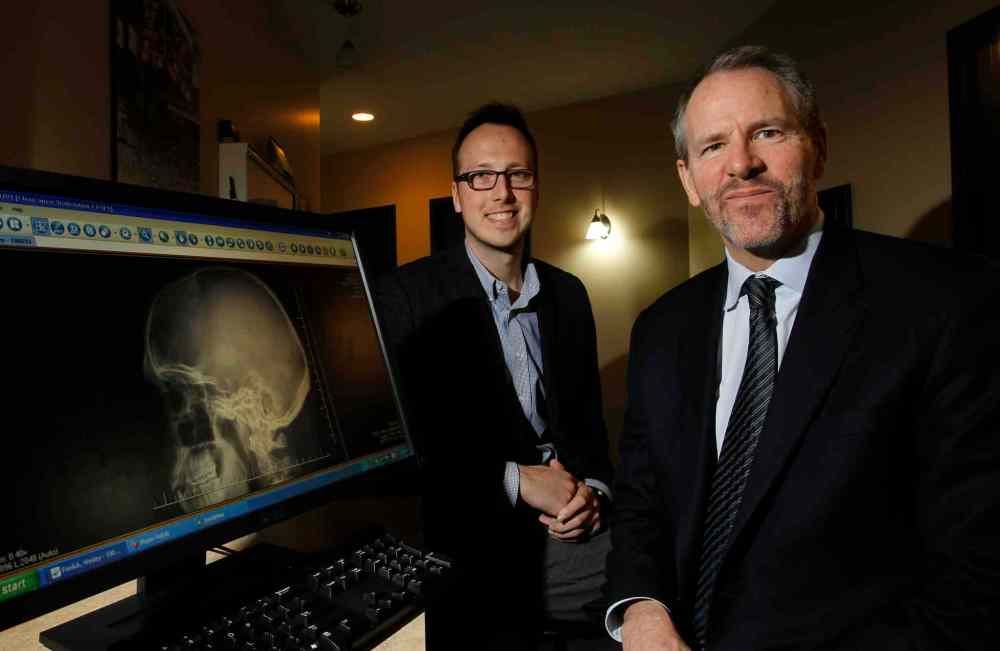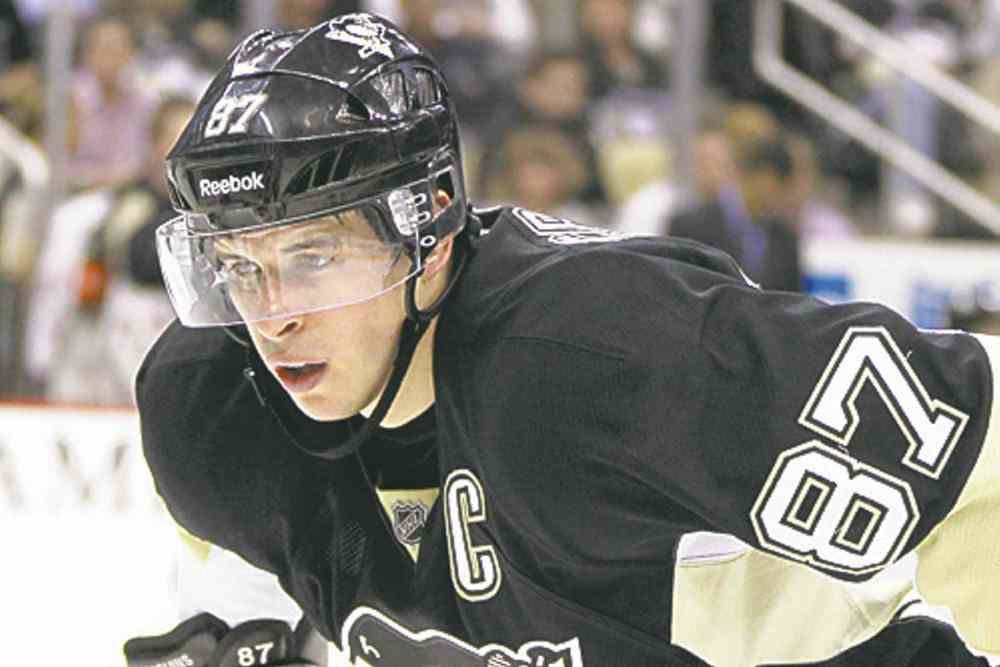MDs decry concussion ‘hype’
Over-diagnosis due to paranoia, say authors of medical journal editorial
Advertisement
Read this article for free:
or
Already have an account? Log in here »
To continue reading, please subscribe:
Monthly Digital Subscription
$19 $0 for the first 4 weeks*
- Enjoy unlimited reading on winnipegfreepress.com
- Read the E-Edition, our digital replica newspaper
- Access News Break, our award-winning app
- Play interactive puzzles
*No charge for 4 weeks then billed as $19 every four weeks (new subscribers and qualified returning subscribers only). Cancel anytime.
Read unlimited articles for free today:
or
Already have an account? Log in here »
Hey there, time traveller!
This article was published 06/04/2014 (3665 days ago), so information in it may no longer be current.
Global attention is leading to the over-diagnosis of concussions and a wave of paranoia in patients who do not have the condition, say two Winnipeg physicians.
Their opinions on the subject have been published in the current edition of a prominent medical journal.
Dr. Neil Craton and Dr. Oliver Leslie — who practise out of Legacy Sport Medicine in St. Vital — co-authored a provocative editorial that appears in the current edition of the Clinical Journal of Sports Medicine.

The peer-reviewed publication is the official journal for the Canadian Academy of Sport and Exercise Medicine as well as the American Medical Society for Sports Medicine.
The physicians, who specialize in muscle and skeletal injuries, say the world is unnecessarily in crisis mode regarding concussions, traumatic brain injuries that are thought to alter brain function.
Contributing to the problem, say Craton and Leslie, are exaggerated media headlines about high-profile, concussed athletes as well as researchers who “catastrophize” the condition.
The sensational media reports include the 2011 news that the Pittsburgh Penguins’ Sidney Crosby became concussed after sustaining blows to the head in back-to-back games. The NHL superstar’s apparent concussion left him sidelined for nearly a year. That same year, former NFL player Dave Duerson killed himself. He reportedly had chronic traumatic encephalopathy (CTE), a rare, degenerative brain disease linked to concussion and suicide.
“It’s crazy. I think people are being harmed by the hype,” said Craton, a physician for the Winnipeg Blue Bombers who has practised sports medicine for 24 years and emergency medicine for six.
“It’s a good-prognosis condition. There’s very little evidence of a bad prognosis for this condition. We need not fear. It’s like, relax. Take the tone down a little bit.”
At the centre of Craton and Leslie’s criticisms are the Zurich Guidelines, the rules physicians follow when caring for concussed patients. The guidelines contain a checklist of concussion symptoms including headaches, depression and irritability.
A panel of world-renowned concussion experts created the guidelines during a 2012 conference in Zurich, Switzerland.
A concussion, say most experts, is a mysterious condition doctors do not really understand and therefore requires a consensus statement on how to diagnose and treat it.
Craton and Leslie say the diagnostic criteria in the Zurich Guidelines are “absurd” considering most people, even if they were uninjured by concussion, would test positive for the brain injury under its recommendations.
“There are a lot of people thinking some of the things in that editorial but are either afraid to say them — or can’t say them — because of the way concussion is portrayed that it’s reaching (an) epidemic state,” said Leslie.
He said he sees patients who suffer from serious anxiety related to believing they are concussed, even when they aren’t.
The pair contend physicians often mistake concussions for whiplash and other soft-tissue injuries.
“What I’m saying is that what’s being diagnosed as only a brain injury is often not a brain injury,” said Craton. “It could be a neck injury. It could be an inner-ear injury. It could be a person who is sad or depressed.”
Rest from work, school, sports, reading, texting, emailing and watching television are often prescribed during concussion recovery. Craton and Leslie say this is often unnecessary and leads to social isolation and depression in the patient.
“We call it the Zurich trap,” said Craton.
Craton and Leslie’s controversial editorial comes on the heels of last month’s announcement that Winnipeg’s Pan Am Clinic will open a pediatric concussion clinic at the MTS Iceplex in the fall. The province has contributed $1 million to the program, which organizers say will put Winnipeg on the map as a centre for concussion care and research.
Children’s brains are more vulnerable to concussions and less receptive to treatment, say concussion experts such as Dr. Michael Ellis, a neurologist hired to lead Pan Am’s concussion program. Ellis studied under Toronto neurologist Dr. Charles Tator, who is known worldwide for his work in the field of concussions.
Ellis currently treats up to 50 concussion patients a week in the pediatric-concussion program he runs at Pan Am Clinic’s original River Heights location.
The Centers for Disease Control in Atlanta estimate up to 10 per cent of athletes will experience a concussion.

Most experts believe 90 per cent of concussion cases are temporary.
“Do we need a million-dollar research centre for this condition? It’s like a cold. It comes, it lasts for a week, it goes away,” said Craton.
According to Ellis, “misdiagnosing concussion as whiplash and not taking those precautions” could have “life-changing and life-threatening consequences.”
He said Craton and Leslie’s editorial misinforms readers about the amount of rest concussion specialists advise their patients.
“It’s misleading to say that every child with a concussion is told not to return to school until they’re 100 per cent asymptomatic. That is not the guidance that we would recommend,” said Ellis.
Andrea Kilgour, a neuropsychologist who worked with the Winnipeg Jets before she moved to Calgary earlier this year, agrees that hype over concussions has resulted in a growing number of patients with anxieties related to fear of the brain injury.
She says such fears could lead to increased antidepressant use and need for psychiatric treatment.
She recalls a recent concussion patient who took three months off work on the advice of her physician. “This person was socially withdrawn and isolated from their normal activities, dropped out of school, dropped out of the part-time job… and became, not shockingly, depressed,” said Kilgour, who notes her perspective is “not the popular view right now.”
Tator, who was one of about 50 experts who helped formulate the Zurich Guidelines, said the medical community is “playing catch-up” regarding concussions.
“It is a considerable issue certainly much more than we realize,” said Tator, noting 200,000 people in Canada get concussions every year.
“That’s gigantic.”
Tator said he’s studying 250 of his patients who suffer from post-concussion syndrome. They live with light sensitivity and intense headaches for years after their head trauma.
Several of Tator’s concussion patients have attempted suicide, probably the result of neurological rather than psychological factors, he said.
Tator admits it’s “frustrating for everyone” there is no good treatment or way to objectively diagnose a concussion. He said the Zurich Guidelines are necessary but not perfect.
“They’re just that — recommendations for how to perform when we don’t have better evidence.”
shamona.harnett@freepress.mb.ca
History
Updated on Monday, April 7, 2014 6:02 AM CDT: Replaces photo
Updated on Monday, April 7, 2014 6:25 PM CDT: changes subheadline


